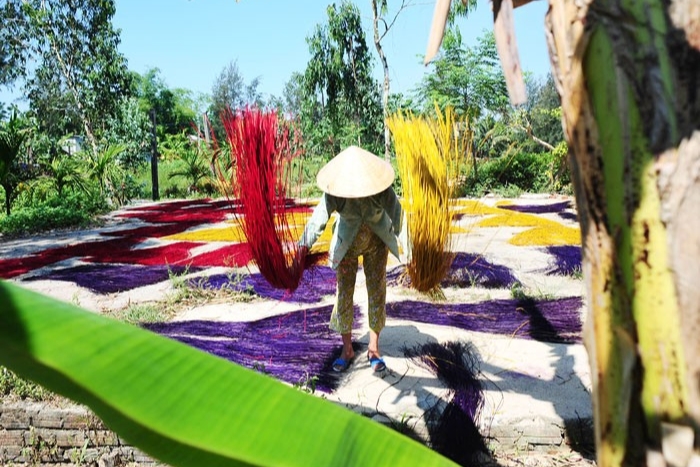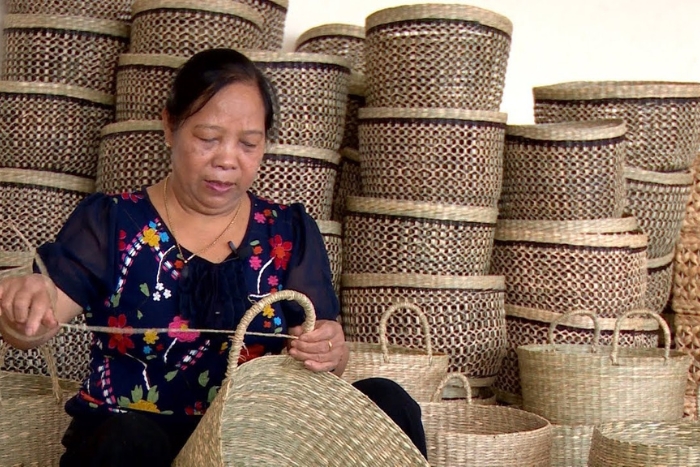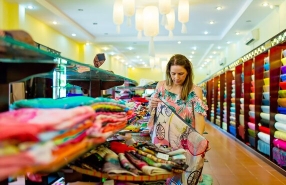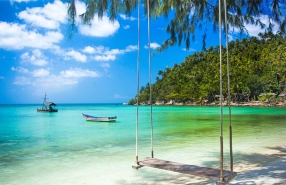When you visit Ninh Binh, what attracts your attention? Wild nature, endless rice fields or just panoramic limestone mountains? Besides that, the must-see attractions such as the traditional handicraft village in Ninh Bình, especially Kim Sơn sedge weaving village Ninh Bình or Kim Sơn traditional sedge weaving craft Ninh Bình will bring you one of the unforgettable moments of your life if you intend to book a tour through a travel agency in Vietnam.
Where is Kim Sơn sedge weaving village Ninh Bình ?
Considered one of the oldest and most
traditional handicraft village in Ninh Bình,
Kim Sơn sedge weaving village Ninh Bình is quietly located next to
Phát Diệm Cathedral, Ninh Bình becomes an iconic destination for those who appreciate the beauty of such a craft that is sometimes lost to the world. In making an authentic and unique product like this, the locals here will specifically focus on planting sedge since the birth of
Kim Sơn sedge weaving village Ninh Bình in order to use them in the manufacturing process. So, the skills of the craftsmen make you surprised with the objects coming from this type of tree.
A Comprehensive Understanding of Kim Sơn sedge weaving village Ninh Bình
According to the mystical stories of the ancestors of this primitive Kim Sơn Ninh Bình region, the official Nguyễn Công Trứ, one of the elites of the country in the 19th century, began to conquer and advance this land under the order of King Minh Mạng. With its abundant profits, Nguyễn Công Trứ finally nicknamed it “Kim Sơn” - the golden mountain of the ancient capital with thousands of historical relics such as
Dinh Le Temple,
Bich Dong Pagoda, ... Although the people here mainly work with traditional crafts in the
traditional handicraft village in Ninh Bình, the agricultural economy from rice fields, green nature, ... recovers several achievements regarding the development of the city accompanying the seaside potential of the sea in the fishing industry. As a result, Kim Sơn is obviously known with its achievements and successes such as
Kim Sơn sedge weaving village Ninh Bình, especially
Kim Sơn traditional sedge weaving crarft Ninh Bình. From the early days of Kim Sơn settlement, dam works were continuously deployed under the leadership of Nguyễn Công Trứ and the early inhabitants of this area. The alluvial lands were increasingly opened to facilitate the planting of sedge - which is a crucial ingredient for
Kim Sơn sedge weaving village Ninh Bình, this craft learned by the inhabitants created sedge products such as carpets, pockets or tiny and family objects for export and domestic consumption contributing to increasing the quality of life of the inhabitants of the
traditional handicraft village in Ninh Bình.
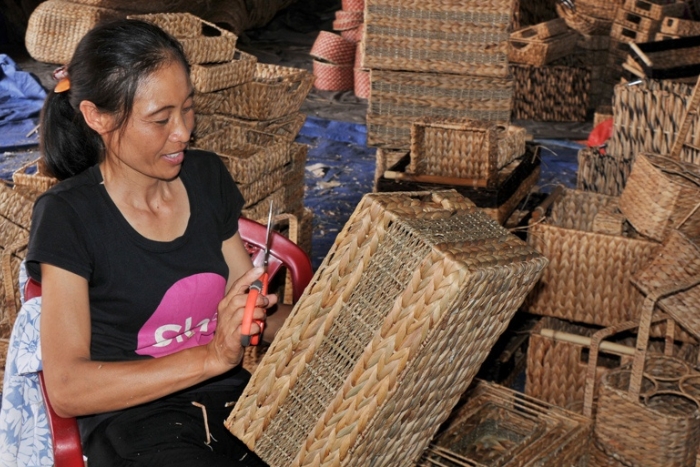
How to make a handicraft from Kim Sơn sedge weaving village Ninh Bình
If you have ever consulted a
Vietnam Package Tours program, the traditional processes of making from
Kim Sơn sedge weaving village Ninh Bình will surprise you. In order to create what is handmade and authentic, craftsmen need to carefully choose the seeds from the moment of sowing to harvesting, choosing, dividing, hanging, dyeing the sedges. Weaving is the vital step in finishing such magnificent products from
Kim Sơn sedge weaving village Ninh Bình because people's taste is always flexible, in other words, craftsmen must constantly advance, imagine and detail new models, new ideas with the aim of perfecting the quality and satisfying the needs of customers. According to
Ninh Binh Travel Guide, Kim Son has a vast land with the area of 4000 ha for planting sedges dedicated to
Kim Sơn sedge weaving village Ninh Bình, which is 6 times higher than the primitive region. Therefore, the crafts take an essential role in the daily life of the locals. Although its origin is not long as other crafts such as Bồ Bát Ninh Binh pottery village,…. but thanks to the
traditional handicraft village in Ninh Bình providing both economic and spiritual facets like this, the locals can feed themselves and raise their children.
A
15 days vietnam itinerary booking will be easier for you to better understand what makes
Kim Sơn sedge weaving village Ninh Bình but the stages of manufacturing can give you the overall information.
1. Harvesting Carex
Carex is a herbaceous plant that grows abundantly in the wetlands of Kim Sơn. It is also done twice a year, from the beginning of the rainy season until the end of the dry season. The plants are cut at the base and gathered into bundles.
2. Drying
After harvesting, the bundles of sedge are spread out on the ground or hung up to dry in the sun. This process can take several days, depending on the weather conditions. Proper drying is crucial to ensure the quality of the weaving as it helps the artisans make the fibers stronger and less likely to break.
3. Dying
Next, the sedge is dyed to add colors and patterns to the finished products. The dyes used are often natural, made from local plants, but synthetic dyes can often be avoided. The sedge stems are dipped in dye baths, then rinsed and dried again.
4. Fiber Preparation
The sedge stalks are sorted and prepared for weaving. They are cut to the desired length and eventually split into thinner strips. This step requires dexterity and precision in ensuring that the fibers are uniform in size.
5. Weaving
Weaving is done by hand on traditional looms. Artisans weave the sedge strips into pre-established patterns, creating a variety of products such as mats, baskets, a signature product from the Kim Sơn traditional sedge weaving craft Ninh Bình, rugs, and other household items. The weaving can range in complexity from simple patterns to more elaborate designs.
6. Finishing
Once weaving is complete, the products are inspected to ensure quality. The edges may be finished with additional stitching or edging to enhance durability. Special finishes, such as adding handles for baskets or fringes for mats, can also be done.
7. Final drying
The finished products are often dried the last time to check that they are completely free of moisture, making them more durable and resistant to mold.
In conclusion, it seems that this process reflects the skill and know-how of the artisans of Kim Sơn sedge weaving village Ninh Bình, passed down from generation to generation. Sedge weaving is not only a means of livelihood for the locals, but also a valuable cultural heritage of the region.

